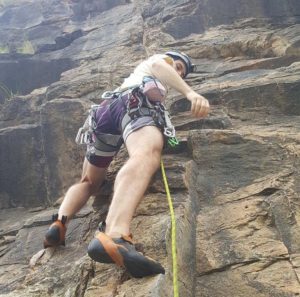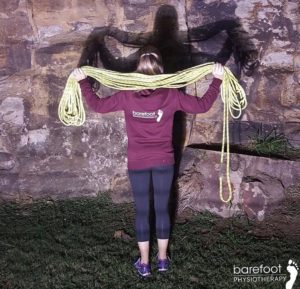Climbers . . . this ones for you!
Following the warmer weather ( and the rain finally clearing up) it seems like a great time to discuss shoulder injury and pain in climbing now that the conditions seem just right! Physio Kirsten is an avid climber, when she isn’t treating our incredible clients you will most likely find her on a rock wall somewhere, or scaling the cliffs at Kangaroo Point in Brisbane.
Kirsten has given us her top tips for climbers, and sat down to let us know about shoulder injury and how physiotherapy can help.
One of my favourite things about treating climbers is that we are super keen on figuring out why things are happening and how we can self treat ourselves to keep climbing. 
Where does shoulder pain come from?
With shoulder pain there are several things to consider. We always want to assess the neck and thoracic spine as pain can commonly originate at these areas. Looking at both the spine and shoulder positioning with movement and climbing often will highlight a dysfunction in the movement. This dysfunction at the joints can lead to nerve irritation or compound soft tissue injuries of the muscle, tendons or labrum.
Treatment for Climbing Shoulder Injury/ Pain
Often treatment will involve the physiotherapist treating the joint dysfunction, nerve irritation, the soft tissue injury and work on correcting the dysfunctional movement.
There are some common areas that frequently need physiotherapy treatment in climbers. In general we need to treat some area in the neck and thoracic joints with manual therapy, strengthen the rotator cuff, middle and lower traps, serratus and lats as well as lengthen the pecs, biceps and lats and train appropriate neck and shoulder positioning for climbing and belaying.

Strengthening antagonist muscles and training should be done in good positioning and control so that:
1. when climbing in not the most ideal positions at least some of the positioning training will transfer and
2. We aren’t overloading ourselves in poor positions leading to injury
Treatment areas and proper cueing are very specific to the individual and often we as climbers deal with some level of pain until it gets to the point we can’t continue climbing. The key to quick recovery is catching the issue early, booking in with a professional who can assess where and what your pain is coming from and start treating what is specific to you.







Leave a Reply
Want to join the discussion?Feel free to contribute!